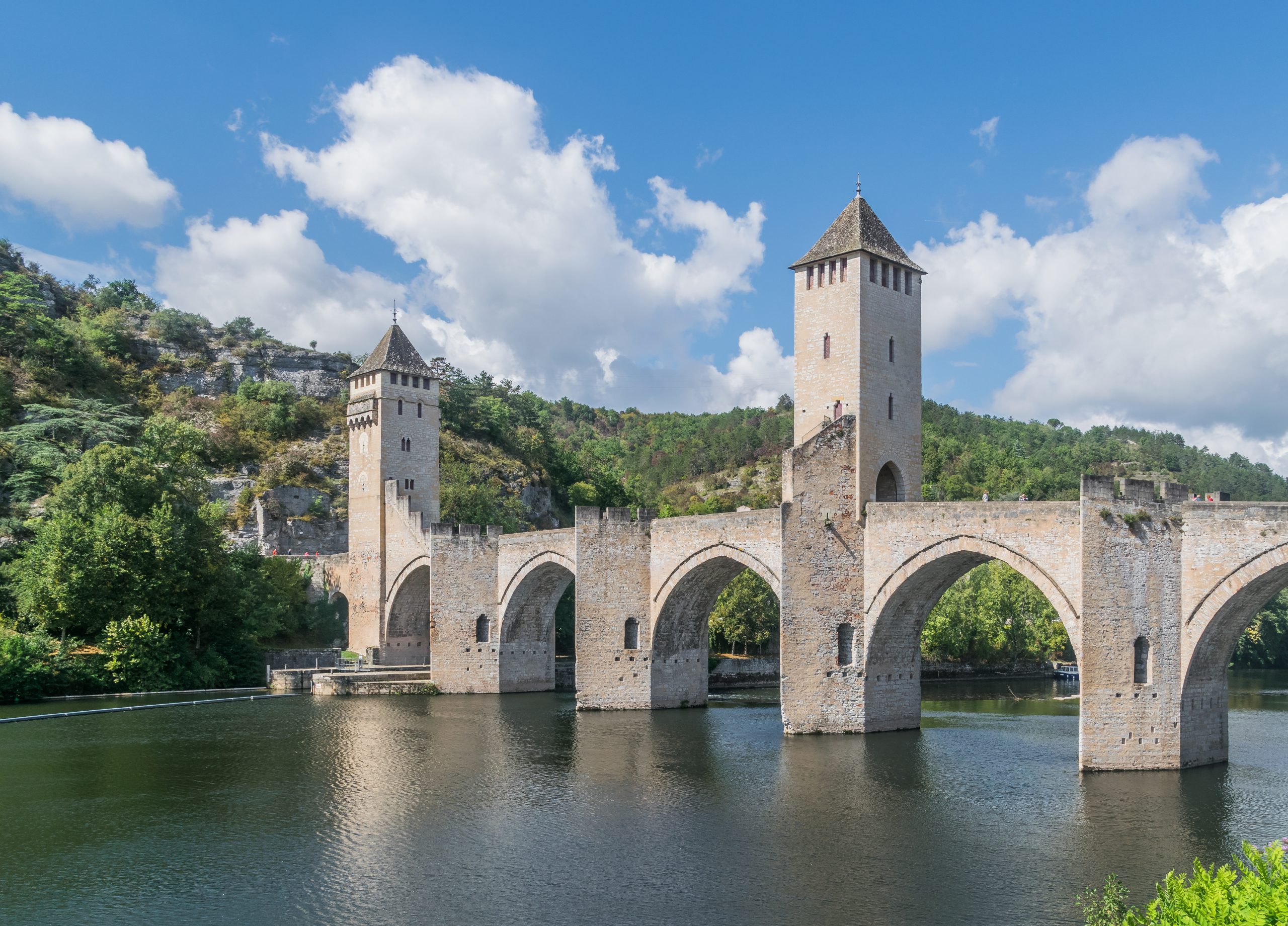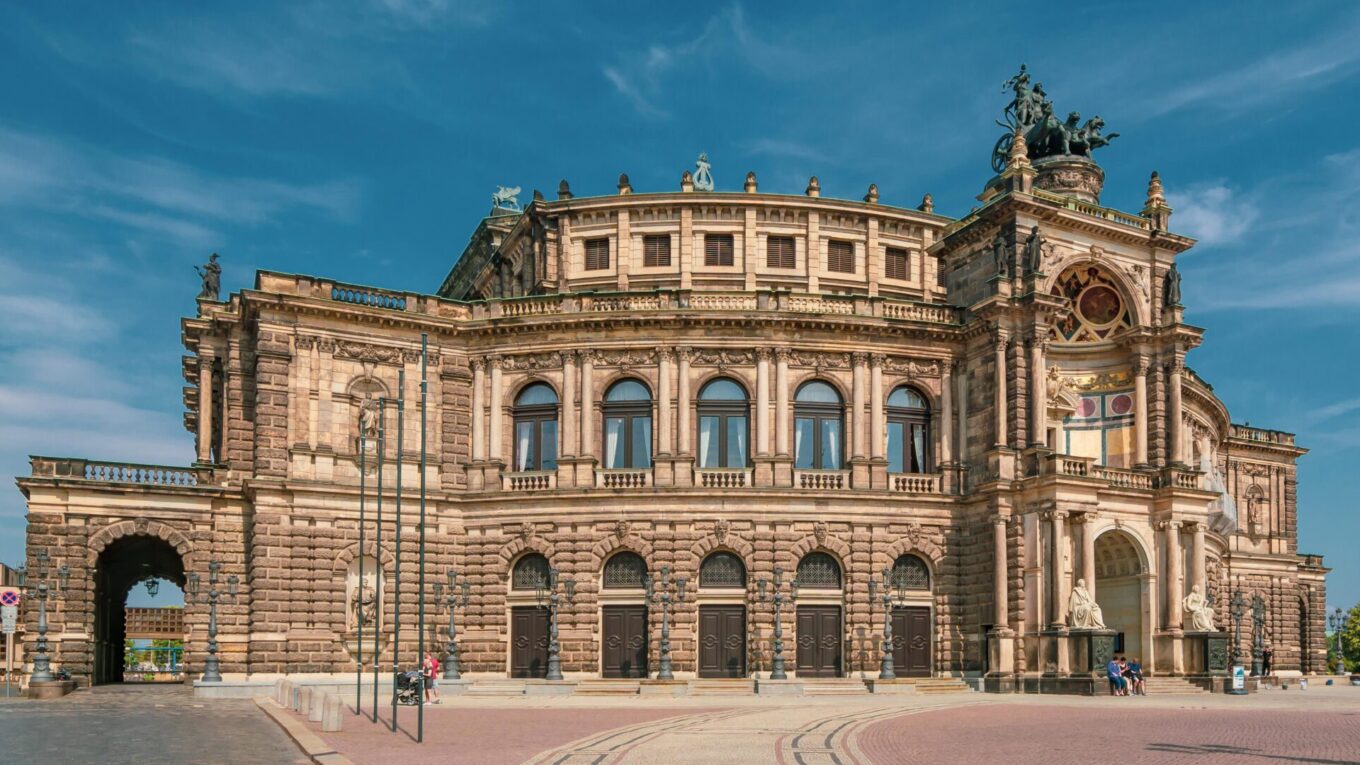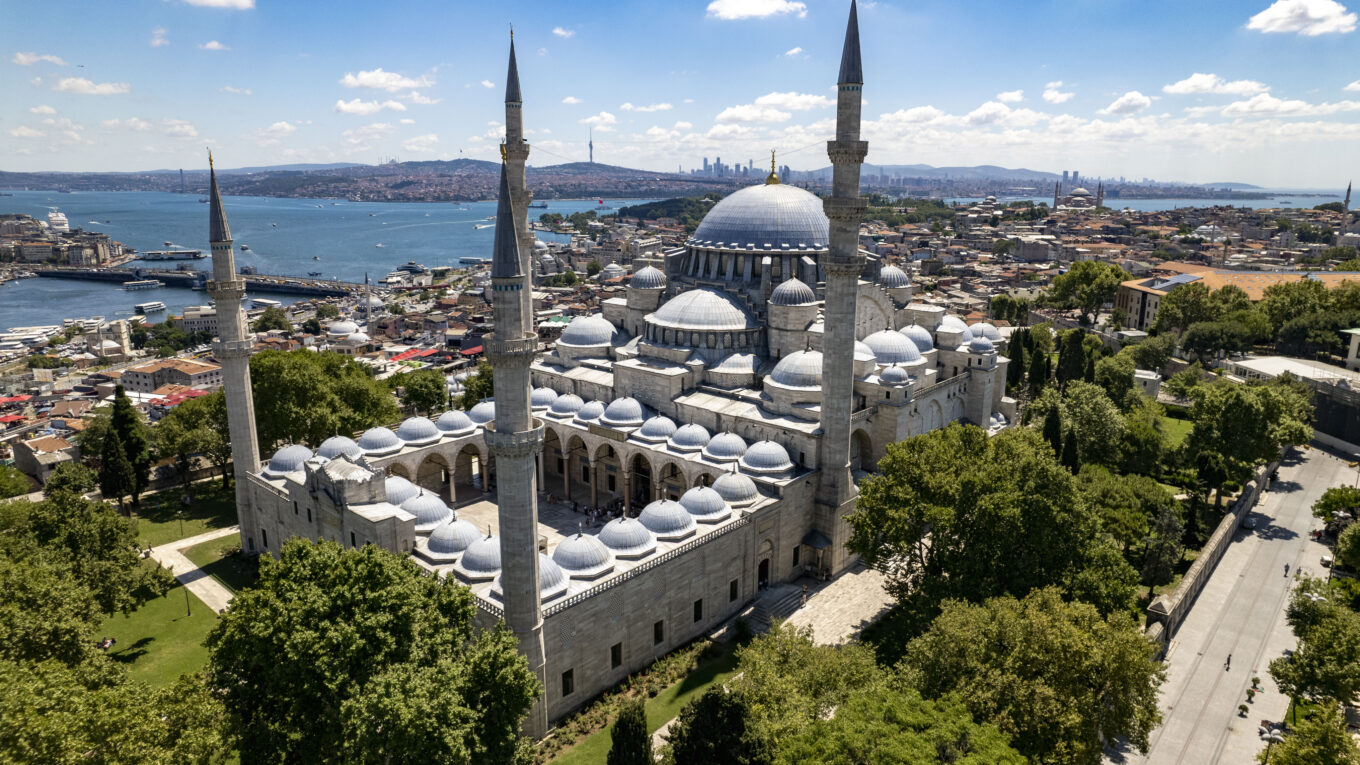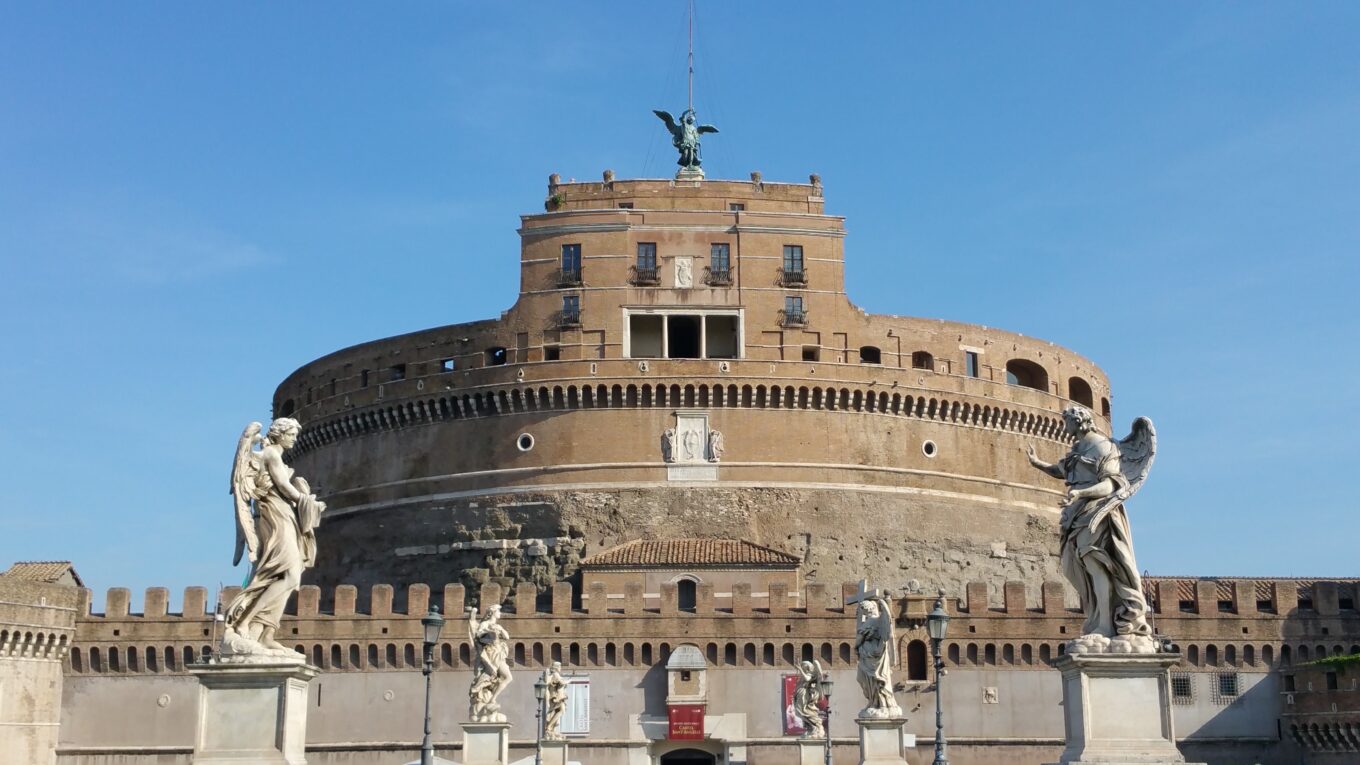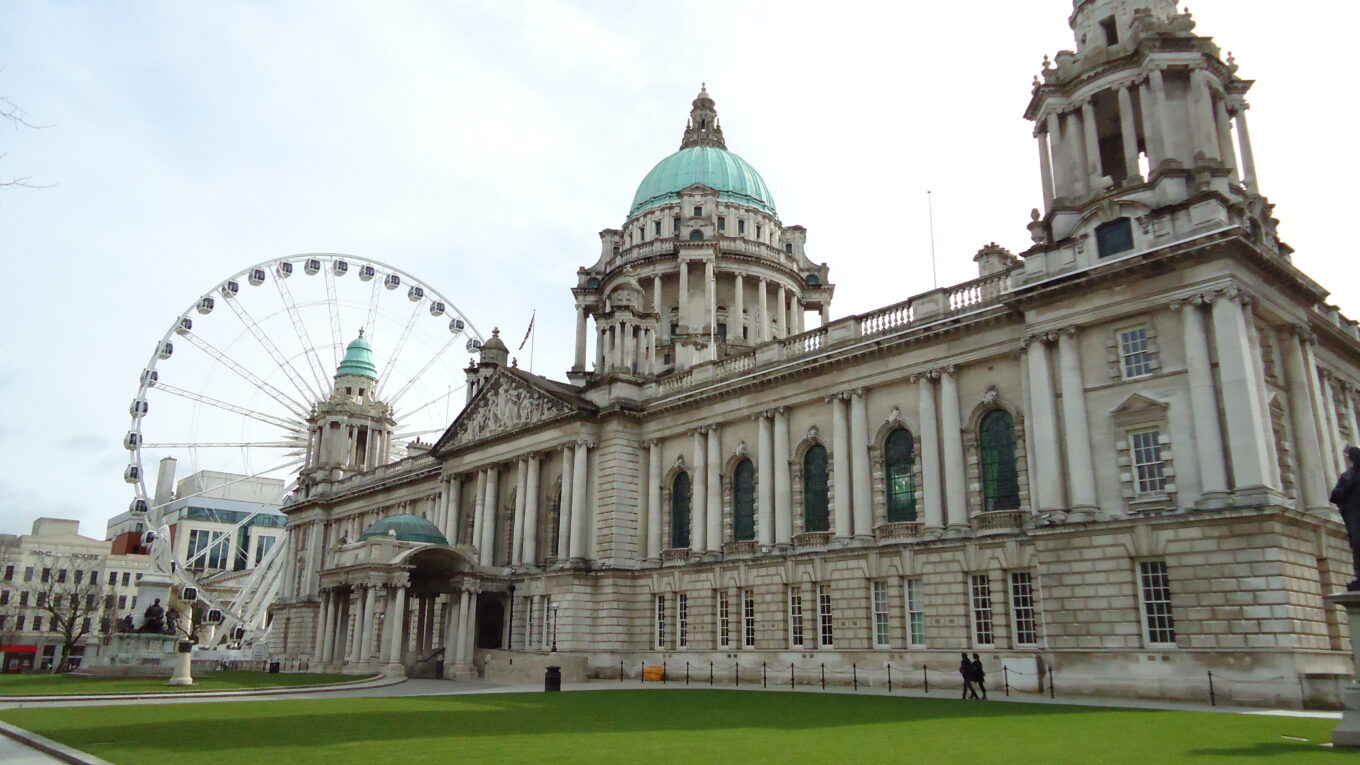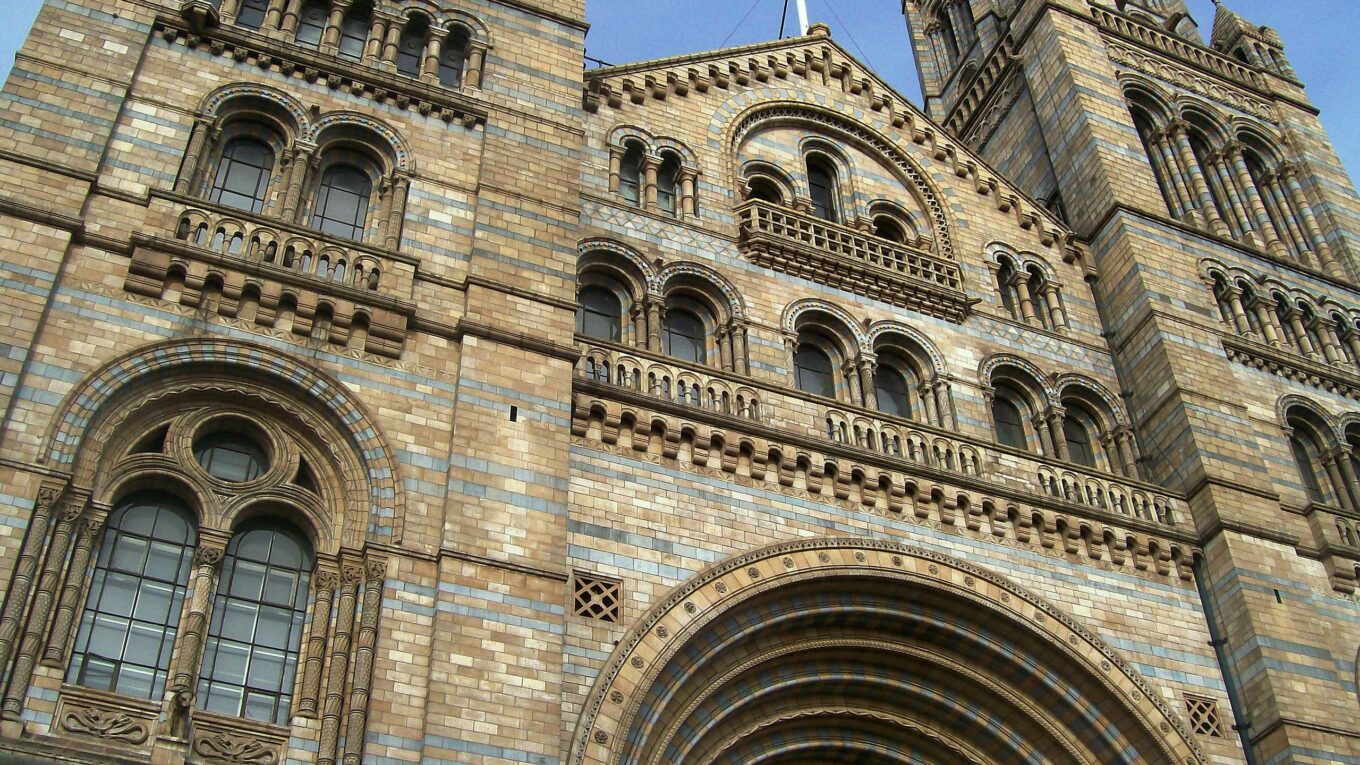Top 12 Medieval Bridges
Throughout history, bridges have been strategic, economic, and commercial lifelines within our cities. The Romans built stone bridges throughout their empire, and the design was very similar to that of the Roman Aqueduct. But after the fall of Rome in 476 CE, the art of bridge-building was largely forgotten in the Dark Ages. It wasn’t until the medieval period that bridges were once again constructed throughout the former lands of the Roman Empire.
Unfortunately, due to their strategic importance, bridges have been highly targeted in times of war and conflict. Throughout various altercations, particularly World War II, many of the world’s greatest medieval bridges were bombed and destroyed. In France and Germany especially, some of the grandest medieval bridges were turned into piles of rubble. Many of these were rebuilt using more modern construction methods.
How Were Medieval Bridges Built?
Medieval bridge construction was a highly sophisticated operation. It all started with the foundation piers. First, the builders would drive several layers of wooden timbers into the ground. Then they would pack earth and soil in between them to make them water-tight. Once a water-tight ring was made, workers would remove the water with buckets either by hand or with the use of water wheels. Eventually, the riverbed would be exposed enough for them to dig into the soil and lay the bridge’s foundations.
As soon as two piers were made, an archway was built connecting them. A temporary arch, made of wood was placed between two piers, and stones were then stacked on top of one another. Once the final keystone was placed, the wooden framework was removed, leaving behind a very sturdy arch. This style of building was used during the construction of the Charles Bridge in Prague, one of the best-preserved medieval bridges in all of Europe.
What are the best medieval bridges?
This list looks to count down the greatest surviving examples of medieval bridges that were not completely destroyed and rebuilt after their original construction. Their order is based on the size, significance, and overall beauty of the construction.
1. Charles Bridge – Prague, Bohemia, Czech Republic

Length: 1,693 feet (516 meters) Year Constructed: 1357 River: Vltava
The Charles Bridge, named for the ruler who built it, King Charles IV, is one of Prague’s many attractions. The bridge connects the old town of Prague with the new town and Prague Castle. Construction began in 1357 but continued for centuries as the bridge was altered and updated, including the statues that decorate the bridge today. The towers located at either end of the bridge were designed in the Gothic Style and were used to collect tolls from anyone crossing the bridge. The overall construction, like most bridges from this era, is made up of stone arches supporting a flat roadway. Today, the bridge has been pedestrianized and is typically full of people crossing at all times of the day.
2. Ponte Vecchio – Florence, Tuscany, Italy
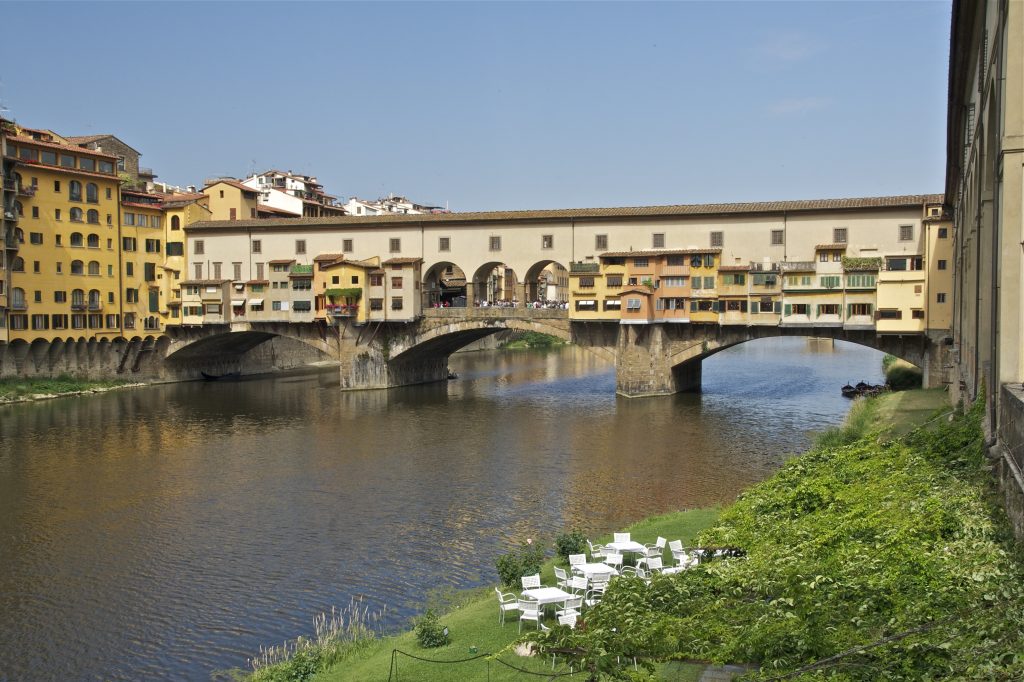
Length: 276 feet (84 meters) Year Constructed: 1345 River: Arno
The Ponte Vecchio is the oldest bridge that still stands in the city of Florence. Historians believe that it replaced an older bridge that was built during Roman times. As was common in the middle ages, this bridge is topped with buildings and structures that are occupied by merchants. Although the tenants have changed over time, the shops are occupied primarily by jewelers. During the final stages of WWII, as the Nazi’s were fleeing Florence, every single bridge in the city was destroyed, except for the Ponte Vecchio. Because of this, the Ponte Vecchio is one of the best-preserved medieval bridges in all of Europe.
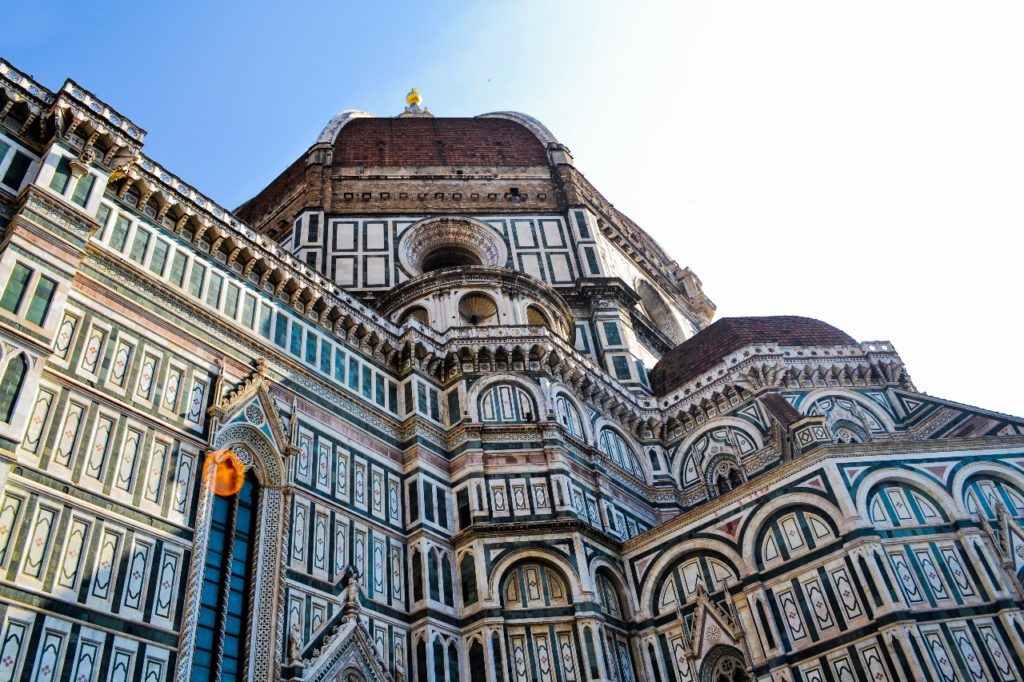
Check out our article on the Architecture of Florence to learn more about the birth of the Renaissance in Italy.
3. Puente de San Martín – Toledo, Castilla–La Mancha, Spain

Length: 485 feet (148 meters) Year Constructed: 1390 River: Tagus
Toledo was once the mighty fortified capital of the Spanish Kingdom of Castile. Eventually, as Spain united, Toledo continued to serve as the capital, until it was replaced by Madrid in 1561 when King Phillip II moved his royal court there. Toledo was a huge city in the Middle Ages, and when the city’s older Roman Bridge wasn’t enough anymore, they constructed another bridge. The Puente de San Martín was built on the opposite side of the city from the Roman Bridge, which was both a strategic and practical decision. But because the Tagus river is much wider on the western side of Toledo, the builders had to construct one of the largest arches the world had ever seen at that point in time at 131 feet (40 meters).
4. Stone Bridge – Regensburg, Bavaria, Germany

Length: 1,013 feet (308 meters) Year Constructed: 1146 River: Danube
One of the earliest examples of this type of construction, Regensburg’s Stone Bridge, was the predecessor for many other medieval bridges. For eight centuries it served as the only crossing point over the Danube in the city of Regensburg. People would come from all over the surrounding area to pay the toll and cross the bridge, which brought great wealth and commerce to the city. Germany’s government considered demolishing the bridge in the early 20th century because the bridge blocked ships from flowing down the Danube, but thankfully, the bridge survived. Instead, a canal was built to bypass this section of the river.
5. Pont Valentré – Cahors, Occitanie, France
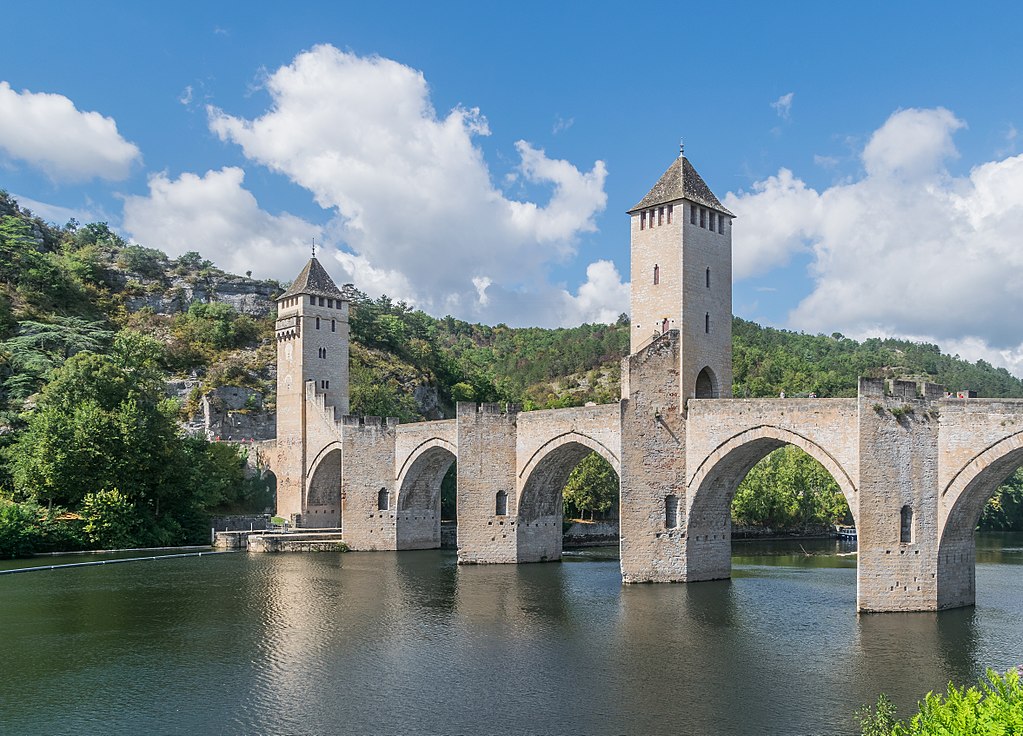
Length: 453 feet (138 meters) Year Constructed: 1378 River: Lot
Ponte Valentré is an example of a medieval fortified bridge. The bridge utilizes several Gothic Arches to support a roadway over the Lot River. Construction of the bridge took 70 years. It is rumored that the builders of the bridge made a pact with the devil in order to meet their construction deadlines. Although the bridge was never actually used in combat, the fortifications would have been very formidable by medieval standards. Today, the Pont Valentré is listed as a UNESCO World Heritage Site as part of the Routes of Santiago de Compostela in France. .
6. Porte des Allemands – Metz, Grand Est, France
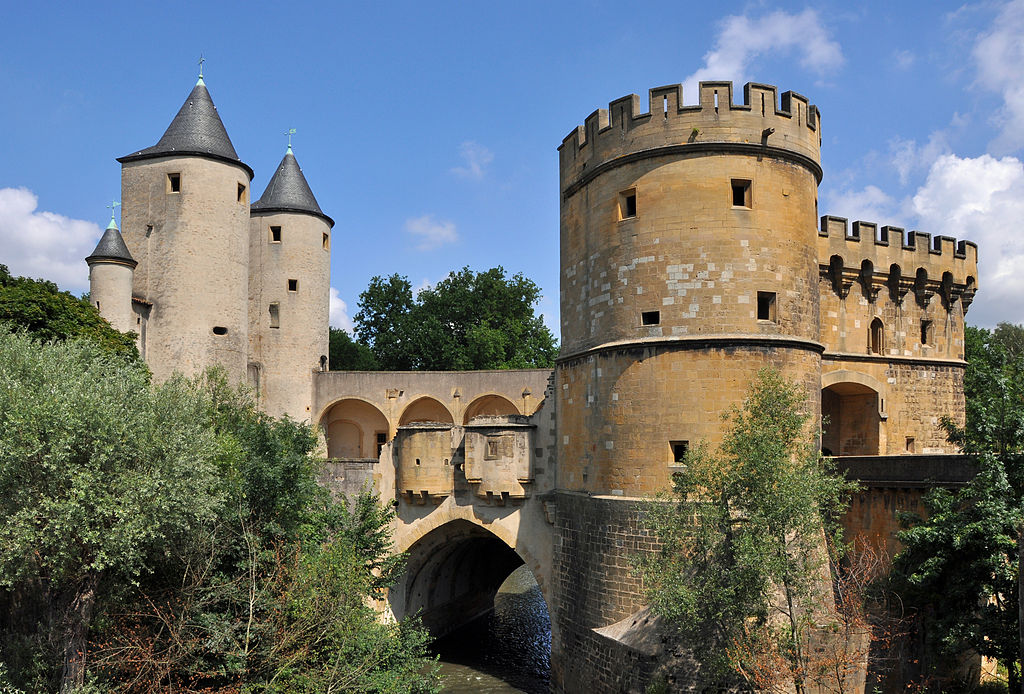
Length: 205 feet (62 meters) Year Constructed: 1230 River: Seille
Although one of the shorter bridges on this list, the Porte des Allemands is remarkable for its fortification system. The original bridge was constructed in 1230, with additional defensive towers and other elements added in the 14th and 15th centuries. Some of the fortified towers have walls 3 meters thick, which made this one of the strongest of the cities 7 historic gates. The name Porte des Allemands translates to “The German’s Gate.” Seeing as this gate is along the road to modern-day Germany, it’s easy to see where the name comes from.
7. Puente de Piedra – Zaragoza, Aragon, Spain
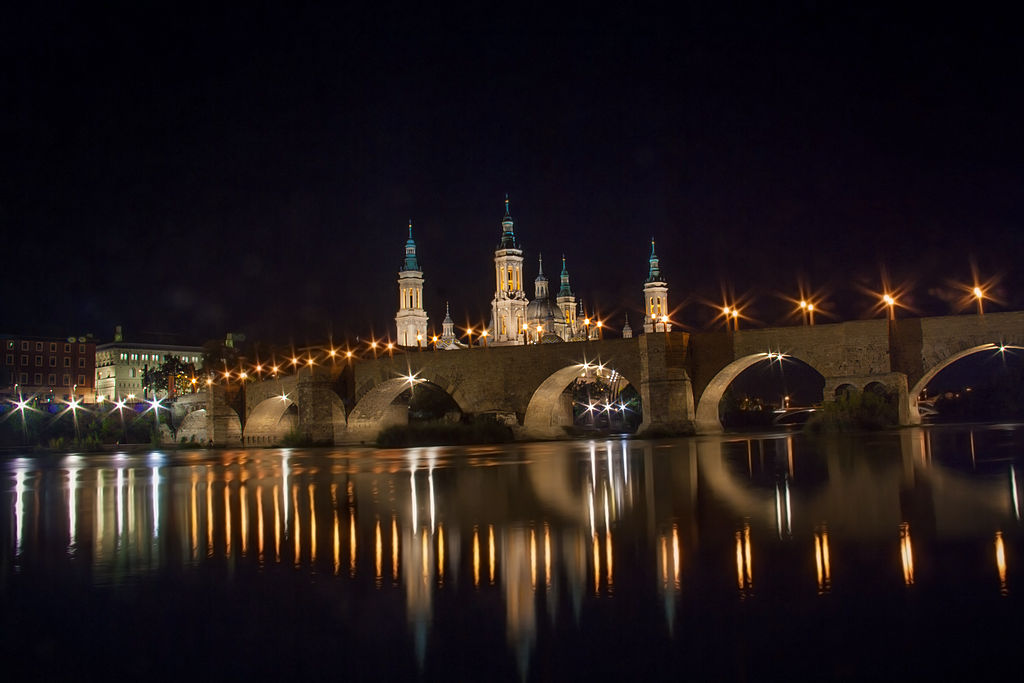
Length: 738 feet (225 meters) Year Constructed: 1440 River: Ebro
The Puente de Piedra or “Stone Bridge” is Zaragoza’s oldest surviving bridge. Construction was completed in 1440, although the midpoint of the bridge dates from a 17th-century rebuild after a large flood destroyed a portion of the bridge. The bridge directly connects with Plaza del Pilar, the main central square of the city. At each end of the bridge, there were defensive towers, but these were demolished in 1906. In 1991 the city added several lion statues. The lions, which are symbols of Zaragoza, have influenced a modern nickname for the bridge, “The Bridge of the Lions.”
Like Architecture of Cities? Sign up for our mailing list to get updates on our latest articles and other information related to Architectural History.
8. Pont Vieux – Carcassonne, Occitanie, France

Length: 757 feet (230 meters) Year Constructed: 1320 River: Aude
Carcassonne may be famous for its UNESCO-listed hilltop fortification, but another one of the city’s fantastic medieval sites is the Pont Vieux. The bridge spans a total distance of over 750 feet, although today only about 30% of that span is over the Aude River. The bridge is the main artery connecting the Carcassonne fortress with the rest of the town and the main train station. A great example of a typical Medieval Arch Bridge, the Pont Vieux has 12 arch spans each about 10-12 meters in length.
9. Pont d’Avignon – Avignon, Provence, France

Length: 568 feet (173 meters) Year Constructed: 1234 River: Rhône
The Pont d’Avignon, also known as the Pont Saint-Bénézet, was originally just under 3,000 feet long, making it the longest bridge on this list. But unfortunately, thanks to the seasonal flooding of the Rhône River, only 4 of the original 22 archways remain. The current length is 568 feet. The bridge is a symbol of the city of Avignon and is also the namesake of one of France’s most infamous folk songs, Sur le Pont d’Avignon. Today, along with other historic sites in Avignon, the bridge is listed as a UNESCO world heritage site.
10. Krämerbrücke – Erfurt, Thuringia, Germany

Length: 410 feet (125 meters) Year Constructed: 1325 River: Gera
Krämerbrücke is one of the few remaining occupied bridges in the world. It has been continually occupied for over 500 years. On either side of the bridge’s central walkway, there are half-timber frame buildings all of which are hundreds of years old. In 1945 there was an allied air raid on the city of Erfurt, and a few of the half-timbered buildings were damaged. But luckily, the overall bridge and structures survived. Today. the street-level floors of the buildings hold various shops, including bakeries, wine stores, antique shops, and small cafes.
11. Mehmed Paša Sokolović Bridge – Višegrad, Republika Srpska, Bosnia and Herzegovina

Length: 587 feet (179 meters) Year Constructed: 1577 River: Drina
The Ottoman Empire created dozens of stone arch bridges all over their realm. One of the most impressive is the Mehmed Paša Sokolović Bridge. This Bridge, which is listed as a UNESCO World Heritage Site, is one of the most recognizable sites of Bosnia and Herzegovina. The bridge has 11 archways, each one is a pointed gothic arch, a later development of the older rounded Roman arch.
12. Ponte Della Maddalena – Borga a Mozzano, Tuscany, Italy
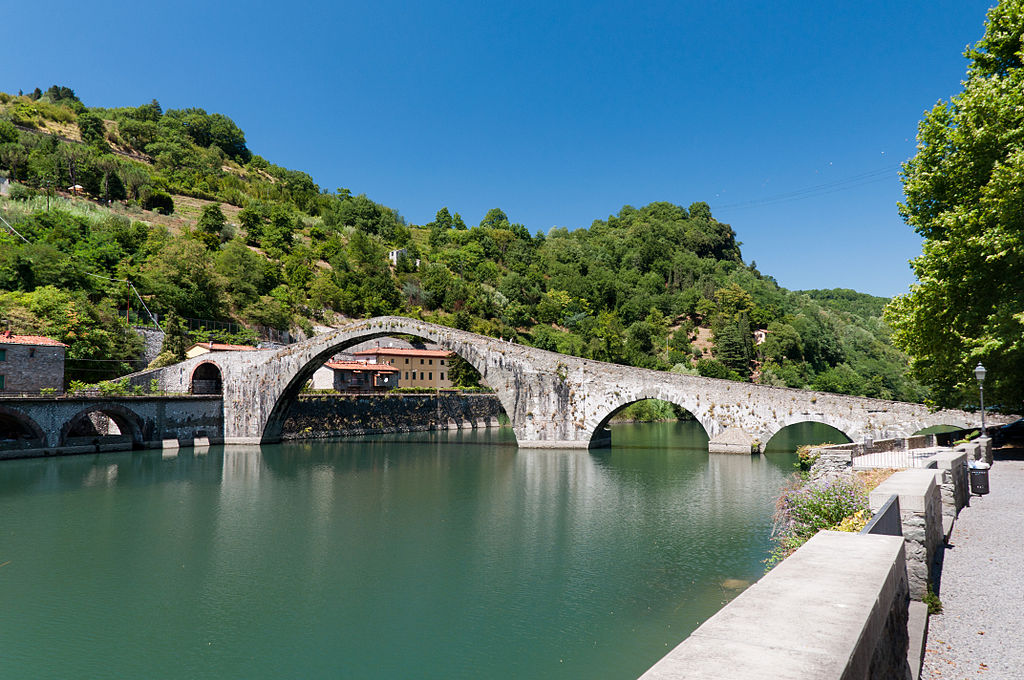
Length: 358 feet (109 meters) Year Constructed: 1100s River: Serchio
The Ponte Della Maddalena is a rather mysterious bridge with a relatively unknown history. Historians aren’t quite sure when the bridge was built, but most are pretty sure it is sometime in the 12th century. It has an incredibly large central arch, which is 60 feet tall and 124 feet wide. The bridge has always been shrouded in legend, which has earned is the local nickname of the Ponte Del Diavolo, or “The Devil’s Bridge.”
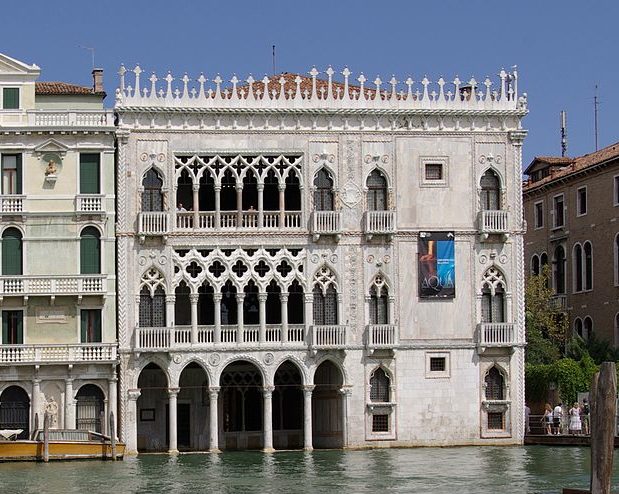
Interested in Venice? Check out our article on the Architecture of Venice to learn more!
Medieval Bridges that were destroyed
Although there are many surviving medieval bridges in the world today, most were destroyed over time. War, flooding, erosion, and demolition all contributed to the loss of bridges over the centuries. WWII alone saw the destruction of dozens of important structures. They were of high strategic value for the movement of troops and supplies, so many bridges were deliberately demolished.
The Castelvecchio Bridge in Verona, Italy is one of many bridges that was destroyed by German Troops as they retreated from the Italian Peninsula. But thanks to a local rebuilding project, the bridge was completely restored using as much of the historic masonry as possible.

The Stari Most in Mostar, Bosnia & Herzegovina, is an Ottoman-era bridge that was destroyed after an explosion during the Croat–Bosniak War in 1993. After the war, multiple nations pledged money to help rebuild the structure to match its former appearance. Today, the bridge remains a symbol of the city of Mostar and is listed as part of a UNESCO World Heritage Site.

London Bridge is one of the most important vehicular bridges in the modern city of London. But today’s bridge replaced a much older one. “Old” London Bridge was commissioned by King Henry II in the early 13th century. Construction began in 1209, and during the Middle Ages, it was one of the most important crossing points over the River Thames. Over time, the bridge became crowded with houses and other wooden structures. In 1831, the first of several renovation projects altered the bridge and created the modern roadway that exists today.

Conclusion
For thousands of years, bridges have been an integral part in advancing civilization. Mankind made great advancements in construction, engineering, and architecture in order to make larger and more practical bridges. The bridges on this list have somehow withstood wars, decay, floods, and erosion over the centuries and are still authentic works of medieval architecture.

- About the Author
- Rob Carney, the founder and lead writer for Architecture of Cities has been studying the history of architecture for over 15 years.
- He is an avid traveler and photographer, and he is passionate about buildings and building history.
- Rob has a B.S. and a Master’s degree in Architecture and has worked as an architect and engineer in the Boston area for 10 years.
Like Architecture of Cities? Sign up for our mailing list to get updates on our latest articles and other information related to Architectural History.

